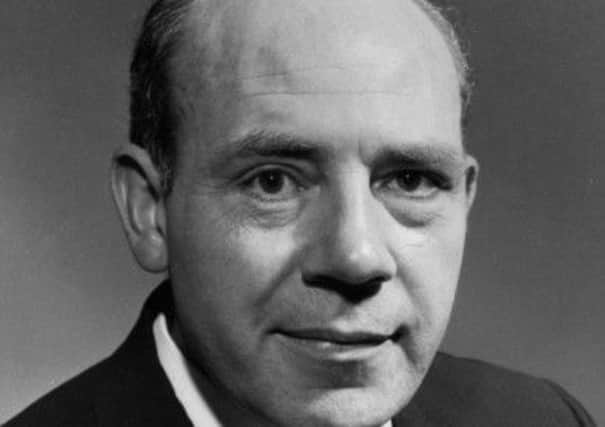Obituary: John Henderson, lawyer and councillor


John Henderson was an Edinburgh solicitor and councillor who worked for many years as a criminal defence agent based on George IV Bridge.
Born in Leith and educated at Holy Cross Primary and Academy, after leaving school he worked for a short time in the Department of Health in Edinburgh’s Eglinton Crescent before joining the Navy in the middle of the Second World War.
Advertisement
Hide AdAdvertisement
Hide AdStationed in Malta, he served on HMS Quilliam, the Q Class destroyer leader, which was deployed in the Mediterranean and then briefly to South Africa before returning to the Med for the Sicily and Salerno landings, during the invasion of southern Italy, in 1943.
In December that year while posted to Bari, a strategic point in the Allied supply line, he escaped a horrific incident during a German bombing raid on the Adriatic port.
The Allies had the upper hand at this point and feared that Hitler may unleash a poison gas attack to redress the balance. The Americans had pledged that, should that happen, they would reply with a similar weapon. As a result, a secret consignment of 2000, 100lb mustard bombs was sent by ship to Italy as a precaution.
On the night of 2 December, the port was particularly busy and the vessel carrying the poisonous load, the John Harvey, remained in the outer harbour, unable to unload her cargo. When the German air assault began the ships had no time to flee and the vessel next to the John Harvey took a direct hit and exploded.
Although the John Harvey was not bomb-damaged she was showered by blazing debris and blew up, killing all on board instantly and releasing the mustard gas into the air and into the water. It is thought that there were more than 2,000 casualties that night, including more than 600 military and merchant marine personnel, plus unknown numbers of civilians, affected by the toxic gas.
Its presence was kept secret for fear the disaster would be a propaganda coup for the enemy and consequently hospitals, swamped with casualties, some suffering burns and temporary blindness, had no idea they were dealing with a chemical weapon.
Fortunately for Henderson and his crew, they had been on patrol out at sea when the tragedy unfolded. It remained a scandal under wraps for some considerable time.
Later he was on one of the massive artificial Mulberry harbours towed across the English Channel to the French beaches to speed up the unloading of troops and equipment on D Day.
Advertisement
Hide AdAdvertisement
Hide AdHe remained in the Navy until the end of the war, returning home to the Scots capital where he studied law at Edinburgh University. Among his class was the American student and future US senator William B Spong Jnr, who went on to represent Virginia for the Democrats.
After graduating in 1949 Henderson spent some time in North America where he travelled widely, taught history in Canada for a year and worked for a further year for a bank in the United States. Back in Edinburgh he practised criminal law as a sole practitioner from an office on George IV Bridge.
A lifelong member of the Labour Party, he served as a councillor on Edinburgh Town Council from 1961-67 when his duties included witnessing the ceremony, in Ramsay Gardens in April 1965, to extinguish the city’s last gas lamp for the final time. During his time with the local authority he sat on its schools, water and police boards.
He was also an election agent and made an attempt to enter national politics himself when he stood for Labour in the West Aberdeenshire constituency in the 1966 general election.
He polled 17 per cent of the votes but it was a two-horse race between the Conservative and Liberal candidates, with the latter taking the seat.
Henderson, who retired from practice in the 1980s, contributed articles to Police magazine and was a member of the now defunct Edinburgh Press Club where honorary members included Kate Adie and the late Alistair Cooke.
His other interests included European travel – Vienna was a favourite destination – naval and cinema history and in particular the history and development of Edinburgh where he lived, for most of his life, in the Grassmarket.
A lifelong Catholic, who once drove all the way to Rome in an Austin 7, he was a supporter of the Maltese Bishop Charles Scicluna though he was also an admirer of churchmen of other faiths, particularly the former Episcopal Bishop of Edinburgh Richard Holloway.
Advertisement
Hide AdAdvertisement
Hide AdModest, admirable and intellectually astute until 90, he never married and has no surviving relatives. A service is being held for him at 10.30am on Friday, 12 December at Edinburgh’s Mortonhall Crematorium.